 sponsored by
sponsored by




By SCOTT FYBUSH
If the word for TV and radio in the northeast in 2009 was
"dreadful," the word for 2010 might be "forgettable."
The year brought with it no really innovative format changes,
no really massive format changes, no magnificent new broadcast
facilities (except, perhaps, for one in Toronto we've yet to
visit), nothing, in short, that's likely to garner much ink when
and if the history books are written.
But every December since 1995, we've sat down to write the
first (or, in this case, perhaps the second) rough draft of that
history, and we can't let 2010 pass into history without once
again examining and reviewing the events of this transitional
year...and we embark on our 16th annual Year in Review as we
always do, with our Top Ten Stories of the Year:
1. The economy turns around - very, very
slowly
Nobody will look back on 2010 as a good year for the broadcasting
economy in the northeast. But there's reason to believe that
someday, we might look back on 2010 as the beginning of a turnaround.
While it's cold comfort for any of the good broadcasters who
lost their jobs one by one in 2010, the pace of job cuts at least
subsided significantly during the year. The massive layoffs of
2009 were largely unknown this past year, which made the handful
of mass job cuts - Granite's at WKBW-TV Buffalo, Cox Radio's
consolidation of its southern Connecticut operations, ESPN Radio's
withdrawal from Pittsburgh - all the more disturbing.
And while they were isolated and fairly rare, there were
signs of hope and even growth in the business. With station
values fully deflated from the early-2000s bubble, some individual
broadcasters found opportunities to buy stations that would have
been out of reach just a few years earlier. The former Route
81 stations in Pennsylvania and New York, poster children for
the speculative boom years, passed from the investment firm that
had repossessed them to local owners in Elmira and Scranton,
for instance, while other small broadcasters quietly added to
their holdings everywhere from Corry, PA (Joe Vilkie) to Olean,
N.Y. (Jeff Andrulonis) to Randolph, Vermont (Bob Vinikoor).
An especially contentious political year didn't hurt the bottom
line, either, as the airwaves from Maine to Pennsylvania were
blanketed with candidate ads and the even more lucrative ads
from political action groups.
 There were even
signs that the pervasive (and ultimately self-defeating) trend
to cut costs by cutting out content and personality had finally
crested and begun to recede: just ask "Slick Tom" Tiberi,
the Buffalo jock who returned to his night shift at Citadel's
WGRF (97 Rock), two years after he was replaced by automation,
or Connecticut talker Jim Vicevich, who lost his mid-morning
gig at WTIC (1080 Hartford) after being out for a while with
health problems, only to come right back a few months later. There were even
signs that the pervasive (and ultimately self-defeating) trend
to cut costs by cutting out content and personality had finally
crested and begun to recede: just ask "Slick Tom" Tiberi,
the Buffalo jock who returned to his night shift at Citadel's
WGRF (97 Rock), two years after he was replaced by automation,
or Connecticut talker Jim Vicevich, who lost his mid-morning
gig at WTIC (1080 Hartford) after being out for a while with
health problems, only to come right back a few months later.
2. Atlantic Broadcasting collapses
As much as this column has celebrated local ownership over
the years, there are times it just doesn't quite go right - and
for that, there was no better example in 2010 than the sad tale
of New Jersey's Atlantic Broadcasting.
In 2008 and 2009, Atlantic looked like a success story in
the making: a group of local broadcasters with fairly extensive
experience in all facets of radio in south Jersey, including
an experienced programmer and a talented engineer, came together
to get financing for the $5 million purchase of Howard Green's
former radio cluster in Atlantic City.
 At first, it seemed
to be working out well: Atlantic's owner/operators made some
smart moves, replacing a low-rated modern rock format with high-energy
top-40 just in time for the busy summer season on the shore and
significantly upgrading one of their FM signals to better reach
Atlantic City. At first, it seemed
to be working out well: Atlantic's owner/operators made some
smart moves, replacing a low-rated modern rock format with high-energy
top-40 just in time for the busy summer season on the shore and
significantly upgrading one of their FM signals to better reach
Atlantic City.
But the good times didn't last: staffers began turning over
at an alarming rate, with stories emerging of pay scales that
were shockingly low even by radio standards ($7500 a year for
a morning team, for instance). And the rumors that began flying
when one of Atlantic's owner/operators was removed from his management
post exploded into the open in October, when prosecutors charged
former Atlantic GM Brett Denafo with having stolen at least $175,000
from the stations by pocketing advertising revenue and using
corporate credit cards for his own expenses.
Denafo denied any wrongdoing, but lawsuits against the stations
piled up (one, for instance, alleged that Denafo had promised
an inexperienced young DJ an airshift in exchange for an investment
of his parents' money in Atlantic), and so did the bills. By
year's end, the stations were reduced to a skeleton staff, allegations
of unpaid salaries were flying, and just before Christmas the
group filed for bankruptcy, owing more than $6 million to Atlantic
City's Sun Bank and hundreds of thousands more to a list of creditors
that included Arbitron and other broadcast vendors.
3. A boom year for FM talk and sports
In a year without much in the way of format innovation, the
big news in programming came from the spoken-word arena, where
the talk and sports formats that had long been AM radio staples
continued to migrate to the FM dial.
 On the heels of
big FM sports-talk launches in Boston and Philadelphia in 2009,
Pittsburgh joined the crowd with February's CBS Radio flip from
top-40 "B93.7" WBZW to "93.7 The Fan," KDKA-FM
- and by year's end, the new FM competitor had driven one of
its AM rivals, ESPN's own WEAE (1250), out of the format. In
Bangor, competition from WAEI-FM (97.1), even after that signal
ditched its affiliation with Boston's WEEI network, drove Stephen
King's venerable WZON out of the sports format on AM. On the heels of
big FM sports-talk launches in Boston and Philadelphia in 2009,
Pittsburgh joined the crowd with February's CBS Radio flip from
top-40 "B93.7" WBZW to "93.7 The Fan," KDKA-FM
- and by year's end, the new FM competitor had driven one of
its AM rivals, ESPN's own WEAE (1250), out of the format. In
Bangor, competition from WAEI-FM (97.1), even after that signal
ditched its affiliation with Boston's WEEI network, drove Stephen
King's venerable WZON out of the sports format on AM.
The trend spread to smaller markets in 2010, too: Galaxy snagged
the ESPN affiliation in Syracuse in March, launching a four-signal
ESPN simulcast on two AMs (WTLA 1200/WSGO 1440) and two FM translators
that eventually drove the market's oldest all-sports voice out
of the format. In Scranton, Shamrock added an FM simulcast (on
WQFM 100.1 Forest City) to the ESPN network it was running on
a pair of AMs and FM translators. And even tiny Olean, N.Y. got
its own all-sports FM via an HD subchannel/FM translator combination
owned by Colonial Broadcasting.
But the good year for sports radio wasn't limited to the FM
dial: in New York, sports remained an AM battle despite pervasive
rumors of ESPN acquiring Emmis' WRXP (101.9). In Boston and Philadelphia,
established AM sports outlets WEEI and WIP more than held their
own against the FM competitors that set up shop in 2009; in Boston,
too, a constant drumbeat of "WEEI-to-FM" rumors failed
to turn into reality, though they kept all of us in the media-journalism
field hopping for a while. (So did the sparring between WEEI
and WBZ-FM over ratings: could Entercom combine the ratings of
WEEI's Boston AM outlet and its Providence FM, which reaches
the south side of the Boston market, to demonstrate a ratings
win over the "Sports Hub"?)
The year was surprisingly quiet when it came to sports rights-fees
battles: the Red Sox and Phillies re-upped with longtime radio
homes WEEI and WPHT, respectively, while the Yankees appeared
poised to stick with WCBS in 2011 as well.
It was a busy year for talk radio as well, thanks in no small
part to one of the most bruising campaign seasons in recent memory.
The migration of the talk format to FM continued slowly, but
steadily: Citadel's March flip of "Lite 105.9" WLTI
to talker WXTL didn't produce a huge ratings shakeup, but was
evidently just enough pressure to push Clear Channel into an
FM simulcast for its established talker WSYR at year's end. In
Scranton, Bold Gold flipped its new FM acquisition, WLNP (94.3),
from AC to talk as WTRW.
 In perhaps the biggest
FM talk flip of the year, Clear Channel's WGY (810) in the Albany
market lost one of its AM talk rivals, but surprisingly strong
competition from the state politics-focused talk of another talk
rival, WGDJ (1300), still helped to prompt the addition of an
FM simulcast (WGY-FM 103.1, ex-WHRL) in September. In perhaps the biggest
FM talk flip of the year, Clear Channel's WGY (810) in the Albany
market lost one of its AM talk rivals, but surprisingly strong
competition from the state politics-focused talk of another talk
rival, WGDJ (1300), still helped to prompt the addition of an
FM simulcast (WGY-FM 103.1, ex-WHRL) in September.
Rochester-market WYSL (1040) added an in-town FM translator
to help overcome its IBOC-induced nighttime signal woes, rebranding
as "News Talk 92.1" in the process; translators also
brought AM sports and talk to FM in small markets such as Ithaca
and Fitchburg.
And then there were the handful of talkers that staked out
new ground on AM: Citadel shifted New London-market WXLM from
a rimshot FM signal (104.7, licensed to Montauk, New York) to
the former WSUB (980 Groton), while Clear Channel attempted to
make a big splash two hours up I-95...
4. Clear Channel launches "Rush Radio"
in Boston
Boston has never been one of Clear Channel's biggest markets.
With only two FMs and two AMs in the cluster, it's a far cry
from the dominant position the big broadcaster occupies in other
big markets such as New York and Los Angeles.
But there's one thing Clear Channel did have going for it
at the start of 2010: through subsidiary Premiere Radio Networks,
it controlled the syndication of most of the biggest names in
talk radio, including Glenn Beck and the format's most dominant
personality, Rush Limbaugh.
By early 2010, NERW-land had already seen Clear Channel move
Limbaugh to stations it owned - Pittsburgh's WPGB started the
trend back in 2004 - but Boston was the first northeastern outpost
for "Rush Radio," the company's low-budget approach
that combines minimal local talk and news headlines with a national
talk lineup including Beck, Limbaugh, Sean Hannity, Mark Levin
and "Coast to Coast AM."
 The format and slogan
were already in place on FM stations in North Carolina when Clear
Channel brought them to Boston in March. With only two FMs in
the market and neither in position to be flipped, Clear Channel
instead looked to the Hub's AM dial, installing "Rush Radio"
on the AM 1200 signal that it had rather expensively relocated
from Framingham (as WKOX) to a rebuilt 50,000-watt transmitter
site in Newton. Clear Channel moved the WXKS(AM) calls to 1200
from their longtime home on 1430 (where the WKOX calls ended
up being parked), and it hoped that as Limbaugh fans followed
the talk icon up the dial from his longtime home on Entercom
talker WRKO (680), they'd stay put there for the rest of the
talk lineup, which came to include former WRKO host Jeff Katz
in mornings as well. The format and slogan
were already in place on FM stations in North Carolina when Clear
Channel brought them to Boston in March. With only two FMs in
the market and neither in position to be flipped, Clear Channel
instead looked to the Hub's AM dial, installing "Rush Radio"
on the AM 1200 signal that it had rather expensively relocated
from Framingham (as WKOX) to a rebuilt 50,000-watt transmitter
site in Newton. Clear Channel moved the WXKS(AM) calls to 1200
from their longtime home on 1430 (where the WKOX calls ended
up being parked), and it hoped that as Limbaugh fans followed
the talk icon up the dial from his longtime home on Entercom
talker WRKO (680), they'd stay put there for the rest of the
talk lineup, which came to include former WRKO host Jeff Katz
in mornings as well.
The results at year's end were inconclusive at best: Limbaugh's
star power had to struggle with an unfamiliar dial position and
a signal that was still inferior to those of competitors WRKO
and especially Greater Media's big FM talker, WTKK, yielding
ratings that struggled to get out of fractional territory. As
for WRKO, it struggled as well, installing political consultant
Charley Manning in the former Rush timeslot and battling with
an afternoon host, Howie Carr, who didn't want to be there and
a morning co-host, Tom Finneran, who probably shouldn't have
been there. Even so, the Boston talk race continued to look more
like a two-way fight between WRKO and WTKK than the three-way
war Clear Channel envisioned.
5. Small markets go HDTV - and spar with
cable
With the expense of converting to digital TV transmission
finally out of the way, 2010 was the year that many smaller TV
markets began to see some local high-definition programming along
with the network shows that had by now gone almost completely
HD.
 Local news in HD
had already become the norm in most larger markets, but 2010
brought the first HD newscasts to markets such as Bangor (WABI-TV)
and Rochester (WHAM-TV); in other markets, additional stations
joined the HD roster (WTNH New Haven, for instance). Local news in HD
had already become the norm in most larger markets, but 2010
brought the first HD newscasts to markets such as Bangor (WABI-TV)
and Rochester (WHAM-TV); in other markets, additional stations
joined the HD roster (WTNH New Haven, for instance).
For viewers in other markets in the region, HD local programming
remained a topic for the future: in markets as large as Harrisburg/Lancaster/York,
Buffalo, Providence and Syracuse, the closest stations got to
HD was the introduction of local news in widescreen standard-definition.
And in many of the region's smallest markets, the local picture
remained resolutely 4:3 standard-definition, and likely to stay
that way for a while longer.
Some of those stations hoped to finance an eventual upgrade
to HD by obtaining more money from cable and satellite companies
to retransmit their signals, but the result, at least for viewers,
was mostly frustration: in market after market, viewers were
bombarded by ads from stations asking them to call their cable
providers and tell them to "keep WXXX on the air,"
while the cable providers shot back with "keep local TV
free" ads of their own.
Most of those disputes were resolved without taking cable
screens dark, but Cablevision subscribers in the New York and
Philadelphia markets weren't as lucky: a fight between Cablevision
and WABC-TV early in the year didn't get resolved until a few
minutes into ABC's Oscars telecast in March, and later in the
fall Cablevision viewers missed out on several weeks of Fox programming
from New York's WNYW and Philadelphia's WTXF. And Time Warner
Cable customers in Utica and Vermont suddenly found their local
Smith Media stations (WKTV and WVNY/WFFF, respectively) replaced
by feeds of distant NBC, ABC and Fox signals as those companies
battled to the end of the year, while another fight loomed between
Time Warner and Sinclair, operator of Fox and MyNetwork stations
in Pittsburgh, Buffalo, Syracuse and Rochester and Portland's
CBS affiliate.

6. Public broadcasters brace for tough
budget times
In many ways, 2010 was a good year for public radio and television:
even as news and local programming budgets continued to shrink
in the commercial world, public broadcasters found ever-increasing
audiences by beefing up their content. In Boston, new local radio
talk shows launched at competitors WGBH and WBUR; a new "Local
Journalism Initiative" funded a half-dozen news staffers
across upstate New York covering the "Innovation Trail";
Susan Arbetter's "Capital Pressroom" brought enhanced
Albany coverage to radio and TV across New York state; and the
list goes on.
But it was also a challenging year for stations trying to
figure out how to support that programming in the long run. At
the federal level, political calls to defund the Corporation
for Public Broadcasting made little headway even as they made
big headlines, but funding was less secure on the local and state
levels for many stations.
 Pennsylvania and
especially New Jersey threatened to remove most, if not all,
of their state support for public broadcasting. In New Jersey,
the fate of the state-run NJN radio and TV services remained
unclear at year's end as lawmakers gave the network a temporary
extension of state funding while considering proposals to transfer
the operation to state colleges or to public broadcasters in
neighboring markets. Pennsylvania and
especially New Jersey threatened to remove most, if not all,
of their state support for public broadcasting. In New Jersey,
the fate of the state-run NJN radio and TV services remained
unclear at year's end as lawmakers gave the network a temporary
extension of state funding while considering proposals to transfer
the operation to state colleges or to public broadcasters in
neighboring markets.
In other markets, colleges and universities sold off their
public broadcasting interests - or tried to. On Long Island's
East End, the local Peconic Public Broadcasting group spent much
of the year struggling to raise just under a million dollars
to buy WLIU (88.3) from Long Island University, finally assembling
the finances near year's end. SUNY Buffalo's plans to transfer
WBFO (88.7) to longtime rival WNED remained incomplete at the
end of the year, and so did Duquesne University's plan to sell
off WDUQ (90.5) in Pittsburgh, where the station's local management
tried to put together a community nonprofit group to buy the
signal.
A few lucky broadcasters did manage to grow during the year:
the nonprofit WFCR Foundation acquired two signals, WNNZ (640
Westfield) and WNNZ-FM (91.7 Deerfield) to add to the western
Massachusetts reach of UMass-run WFCR-FM (88.5 Amherst). Vermont
Public Radio, North Country Public Radio and Albany's WAMC all
made incremental additions to their far-flung networks, and Rochester's
WXXI (where your editor sometimes toils) built out WITH (90.1
Ithaca) to bring a new public radio service to that small city.
7. Religious radio: Growth for EMF and
Catholic broadcasting
One bright spot in the radio industry's generally gloomy picture
in 2010 came from another corner of the noncommercial dial: the
world of religious broadcasting, where growth among both evangelical
Protestant and Catholic outlets was a constant story during the
year.
No religious broadcaster has grown faster on the national
level in recent years than California-based EMF Broadcasting,
which has aggressively expanded the footprint of its "K-Love"
and "Air1" networks from coast to coast, and 2010 brought
one of the biggest station purchases in EMF's history as the
network positioned itself to enter the New York City market.
 It was no secret
that Cox was looking to sell WCTZ (96.7 Port Chester NY) once
the station was relocated from Stamford, Connecticut over the
state line to Westchester County. At the height of the market
a few years ago, that relocated signal, serving at least the
northern half of New York City, would probably have sold for
something close to nine figures - but with the collapse of station
values and the drying up of available financing for buyers, the
pool of potential purchasers had dwindled by the time EMF came
along, and that made EMF's $15 million deal look pretty good
for both sides. It was no secret
that Cox was looking to sell WCTZ (96.7 Port Chester NY) once
the station was relocated from Stamford, Connecticut over the
state line to Westchester County. At the height of the market
a few years ago, that relocated signal, serving at least the
northern half of New York City, would probably have sold for
something close to nine figures - but with the collapse of station
values and the drying up of available financing for buyers, the
pool of potential purchasers had dwindled by the time EMF came
along, and that made EMF's $15 million deal look pretty good
for both sides.
EMF won't take over operation of the station until the sale
closes sometime early in 2011, but Cox wasted no time shuttering
what was left of "96.7 the Coast," putting its AC format
on automation and letting much of its Norwalk-based staff go
as it consolidated its southern Connecticut operations up the
coast in Milford.
But EMF's entry into New York was hardly the only move the
"K-Love" folks made during their very busy year. In
northwestern Pennsylvania, EMF picked up WEXC (107.1 Greenville)
and its two AM sisters from the estate of late owner Harold Glunt.
In Utica, EMF shifted its flagship "K-Love" service
to one of the biggest signals in town, swapping calls and formats
between its existing "K-Love," class A WKVU (100.7),
and the big class B signal on 107.3 that had been broadcasting
"Air1" as WRCK.
*While EMF may have been the largest religious broadcaster
doing business in the region, it was hardly the only one. Bath-based
Family Life Ministries kept expanding its Family Life Network,
adding new signals in Unadilla, N.Y. and Laporte, Pennsylvania,
LMA'ing WHPA (93.5) to enter the Altoona market and picking up
WNAE-FM (102.7 Clarendon PA) from Iorio Broadcasting, along with
a construction permit to move the station into the Erie area
from a new city of license of Wattsburg.
 And the world of
Catholic radio grew dramatically in 2010, most notably in Boston,
where Alex Langer sold off WBIX (1060 Natick) to Buffalo-based
Holy Family Communications at a discounted price ($1 million
in cash, $500,000 as an in-kind gift), and in Pittsburgh, where
St. Joseph Ministries signed on a three-station cluster headed
up by WAOB-FM (106.7), the former WAMO-FM. Another Catholic signal
came to 106.7 in the Portland market, where WXTP ("The Promise")
was spun off from Nassau. And thanks to aggressive work by consulting
engineers during the 2007 window for new noncommercial FM applications,
Catholic signals were also granted in plenty of smaller markets
around the region, with a few of them, such as WHVM 91.9 Owego,
making it to air during 2010. And the world of
Catholic radio grew dramatically in 2010, most notably in Boston,
where Alex Langer sold off WBIX (1060 Natick) to Buffalo-based
Holy Family Communications at a discounted price ($1 million
in cash, $500,000 as an in-kind gift), and in Pittsburgh, where
St. Joseph Ministries signed on a three-station cluster headed
up by WAOB-FM (106.7), the former WAMO-FM. Another Catholic signal
came to 106.7 in the Portland market, where WXTP ("The Promise")
was spun off from Nassau. And thanks to aggressive work by consulting
engineers during the 2007 window for new noncommercial FM applications,
Catholic signals were also granted in plenty of smaller markets
around the region, with a few of them, such as WHVM 91.9 Owego,
making it to air during 2010.
On the fringes of the mainstream, 2010 was the year that Family
Radio founder Harold Camping once again declared he had determined
the date the world would end. Having done so once before in 1994,
Camping this time took out ads on the back of New York City buses
to proclaim that it would happen for real in May 2011 - and to
promote his local outlet, WFME (94.7 Newark) in the meantime.
8. Radio Disney exits smaller markets
When Radio Disney started up in the mid-nineties, AM radio
made some sense as a distribution platform: in that era before
widespread mobile streaming and satellite radio, AM signals were
relatively inexpensive and widely available to the young listeners
Disney sought (and to their parents, too.)
 But
what worked tolerably well in 1997 made less sense in 2010, when
Disney began to get out of the AM radio game in its smaller markets.
A first round of station sales didn't include anything in NERW-land,
but in late September Disney announced a second round of spinoffs
that included Providence-market WDDZ (550 Pawtucket) and Hartford-market
WDZK (1550 Bloomfield). Both stations went silent at the end
of the day September 30, and both quickly found buyers to bring
them back on the air in 2011: Salem in Rhode Island and Blount
in Hartford. But
what worked tolerably well in 1997 made less sense in 2010, when
Disney began to get out of the AM radio game in its smaller markets.
A first round of station sales didn't include anything in NERW-land,
but in late September Disney announced a second round of spinoffs
that included Providence-market WDDZ (550 Pawtucket) and Hartford-market
WDZK (1550 Bloomfield). Both stations went silent at the end
of the day September 30, and both quickly found buyers to bring
them back on the air in 2011: Salem in Rhode Island and Blount
in Hartford.
In Pittsburgh, Radio Disney actually ended up with a station
upgrade at year's end, as Disney pulled the kiddie format off
affiliate WWCS (540 Canonsburg) as a stopgap replacement for
ESPN Radio on WEAE (1250 Pittsburgh) while seeking a buyer for
that station as well.
Will 2011 bring sales at any of Disney's other Radio Disney
AM outlets in the region, in Albany, Boston or even Philadelphia
and New York?
9. Corus silences AMs, exits Quebec
If big-ticket station sales were largely unknown on the U.S.
side of the border in 2010, they were in plentiful supply in
Canada, where station consolidation continued at a pace reminiscent
of U.S. broadcasting a decade ago.
Bell Canada's parent company, BCE, bought back its majority
interest in CTV for C$2.3 billion; on a smaller scale, Haliburton
Broadcasting added more than half a dozen stations to its Ontario
station group. But the most interesting deal of the year came
from Quebec, where Corus decided to get out of the province after
having invested tens of millions of dollars in station acquisitions
over the last few years.
The Toronto-based broadcaster, newly installed in a shiny
new waterfront headquarters building on "Corus Quay,"
sold off a handful of its stations individually, but the bulk
of its properties in Montreal, Quebec City, Sherbrooke and Trois-Rivieres
went en masse to another big Quebec operator, cable TV giant
Cogeco.
It took several months for the CRTC to work through the competitive
implications of the C$80 million deal, and in the end Cogeco
had to agree to spin off an FM signal in Sherbrooke and two in
Quebec City, as well as to establish a province-wide radio newsroom.
And while Cogeco did get the CRTC's blessing to exceed the ownership
caps in Montreal, where it will have three French-language FM
signals, Corus' exit from Quebec came at the expense of even
more market diversity in Montreal.
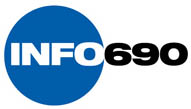 That's because two
of Corus' Montreal stations didn't even survive long enough to
be included in the sale to Cogeco: at 7 PM on Friday, January
29, Corus abruptly took CINF (690) and CINW (940) off the air,
saying in a statement that the stations were no longer able to
support themselves. That's because two
of Corus' Montreal stations didn't even survive long enough to
be included in the sale to Cogeco: at 7 PM on Friday, January
29, Corus abruptly took CINF (690) and CINW (940) off the air,
saying in a statement that the stations were no longer able to
support themselves.
"We put tremendous effort into trying to find the right
format and content to grow our audience base and operate profitably,
but after years of effort it is clear these AM stations are not
viable," said Corus Québec vice president Mario Cecchini.
Within a few months, Corus would return the stations' licenses
for cancellation, ending histories that went back to 1919 (as
Marconi's XWA, Canada's first station) for CINW and 1946 for
CINF.
Not everyone agreed with Corus that the stations were economically
unsustainable: descendants of the Tietolman family that founded
CINF's predecessor, CKVL, asked the CRTC to deny the Corus-Cogeco
deal and instead approve their own rival bid for the Corus stations,
including the reactivation of the 690 and 940 facilities. But
it was to no avail: in December, the CRTC approved the Cogeco
purchase, reaffirming the demise of those Montreal frequencies
while putting Cogeco in control of by far the largest remaining
French-language AM in town, sports talker CKAC (730).
Elsewhere in Canada, the demise of the AM dial continued apace:
Corus quietly pulled the plug on CJUL (1220) in Cornwall, Ontario
to focus on its FMs there, while CFGT (1270 Alma QC) moved to
FM and the CBC's CBE (1550 Windsor ON) began its transition to
the FM dial as well. On the flip side, the CBC's initial FM tests
to relocate CBI (1140 Sydney NS) were unsuccessful, and in Ottawa,
Rogers actually invested in its AM properties, staffing up CIWW
(1310) as it flipped the oldies station to all-news.
10. Death penalty for CHSC
One more Canadian AM station went dark in 2010, but for different
reasons.
 It was a very bad
year for Pellpropco, the licensee of CHSC (1220 St. Catharines)
in Canada's Niagara region. Owner Dominic Pellegrini had been
in the CRTC's crosshairs almost since taking over the station,
and in 2010 the agency finally lost its patience with CHSC's
continued flouting of its rules. Not only was the station broadcasting
in Italian when it should have been operating in English, the
CRTC alleged - but it had also moved its entire studio and office
operation from St. Catharines to the Toronto suburb of Woodbridge
without permission. It was a very bad
year for Pellpropco, the licensee of CHSC (1220 St. Catharines)
in Canada's Niagara region. Owner Dominic Pellegrini had been
in the CRTC's crosshairs almost since taking over the station,
and in 2010 the agency finally lost its patience with CHSC's
continued flouting of its rules. Not only was the station broadcasting
in Italian when it should have been operating in English, the
CRTC alleged - but it had also moved its entire studio and office
operation from St. Catharines to the Toronto suburb of Woodbridge
without permission.
After repeated short-term renewals and extensions, the CRTC
finally decided it had had enough: in July, it told Pellpropco
that the CHSC license would not be renewed, ordering the station
off the air at the close of business August 31.
The morning of September 1 dawned with CHSC still on the air
as Pellpropco appealed the CRTC's ruling to a Canadian court,
but it was unable to hold off the inevitable: after losing the
appeal, CHSC quietly left the airwaves sometime on the night
of September 30.

The Year in Station
Sales
It was a lousy year to be a seller, as station values cratered.
(Unless you happened to have a translator to sell, in which case
values were sharply up.) It was a lousy year to be a buyer, unless
you were one of the few who happened to have cash on hand, in
which case it was actually a pretty good year to be a buyer.
And it was a lousy year to be a station broker, period.
But even in the worst of economies, stations were bought and
sold, and as we do every year, NERW was there to chronicle them:
JANUARY: Just a few station sales made the news in
the first month of 2010, as Schenectady doctor Thomas Kuettel
agreed to pay Albany Broadcasting $175,000 for WIZR (930 Johnstown),
which he brought back to the air later in the year, whle Horizon
Christian Fellowship added to its Massachusetts holdings by paying
Calvary Chapel of Costa Mesa $200,000 for WFGL (960 Fitchburg)
and WJWT (91.7 Gardner). The month's biggest deal is also in
the Bay State, where Antonio Gois pays J Sports $1.8 million
for WAMG (890 Dedham)/WLLH (1400 Lowell), a big drop from the
$9 million J Sports had paid for the stations five years earlier.
FEBRUARY: The WallerSutton investment group begins
winding down its investment in the former Route 81 Radio group,
now operating as "WS2K Radio LLC," selling WLNP (94.3),
WNAK (730) and WCDL (1440) in the Wilkes-Barre/Scranton market
to Bold Gold, which pays just $500,000 for the three stations
- barely more than the $475,000 that Route 81 paid for WNAK alone
back in 2003. (WCDL and what became WLNP came as part of a $2.5
million purchase from Citadel that also included WAZL in Hazleton
and WHYL in Carlisle.) Bold Gold will then spin WNAK to another
local broadcaster, GEOS, for $128,659. In upstate New York, Northeast
Gospel Network sells translator W292CN (106.3 Herkimer) to Ken
Roser for $30,000; he'll move it to Utica and 95.5 to relay his
WUTQ (1550). Down the road just a bit, Michael Celenza sells
unbuilt WKAJ (1120 Little Falls) to John Teseiro's Cranesville
Block Company for $11,000.
MARCH: Vox Radio splits up a long-united pair of central
Vermont signals, spinning WCVR (102.1 Randolph) to Vermont Public
Radio for $435,000 and WTSJ (1320 Randolph) to Bob Vinikoor's
Koor Communications for just $70,000. On Long Island, Multicultural
Radio Broadcasting inks a $150,000 deal to sell WNYG (1440 Babylon)
to Radio Cantico Nuevo, which had been leasing the station's
airtime - but which would have to move the station out to eastern
Suffolk County to get it out of the way of Multicultural's WNSW
(1430) as that station upgraded. And in Maine, Calvary Chapel
of Costa Mesa sold WJCX (99.5 Pittsfield) to Calvary Chapel of
Bangor for $200,000.
APRIL: The biggest radio deal of the month - and one
of the biggest of the year - came from north of the border, where
Cogeco agreed to pay C$80 million for Corus' radio stations in
Quebec; it would take until year's end for the CRTC to approve
the sale, albeit with strict conditions that Cogeco spin off
stations in Quebec City and Sherbrooke that would have exceeded
ownership caps. The Corus/Cogeco deal is soon dwarfed by an even
bigger TV deal, as Shaw Communications (Corus' former parent
company) agrees to pay C$2 billion for Canwest Global Communications,
including the Global TV network.
WallerSutton sold off the last of its WS2K radio assets with
a $1,425,000 deal to transfer its Elmira/Corning radio group,
three AMs and three FMs, to Vision Communications; those stations
cost Route 81 $4.5 million when it bought them in 2003. In Massachusetts,
Horizon Christian Fellowship paid California's Living Proof $150,000
for an unbuilt construction permit in Lunenburg.
MAY: Another slow month for sales; north of the border,
Haliburton Broadcasting kicked off an acquisition spree with
a C$125,000 deal to buy CJJM (99.3 Espanola) from JOCO Communications;
in the Mohawk Valley, Doug Stephan sells WSDE (1190 Cobleskill)
to Ed and Alla Horak's Schoharie Broadcasting for $132,800; they'd
been leasing the station for several years. And in a year with
few TV deals, Buffalo broadcasting vets Phil Arno and Don Angelo
put together a $2.75 million deal to buy WNGS (Channel 67) from
religious broadcaster Daystar.
JUNE: CTV adds to its Toronto radio holdings with the
proposed C$27 million purchase of Milestone's Flow 93.5 (CFXJ),
while it applies to sell CHST (102.3 London) to Rogers for C$16
million. South of the border, WCIN (91.3 Tunkhannock PA) passes
from Telikoja Educational Broadcasting to Family Life Ministries;
in Maine, Decelles-Smith Media inks a $220,000 deal to sell WEGP
(1390 Presque Isle) to Northern Maine Broadcasting.

JULY: Alex Langer sells WBIX (1060 Natick-Boston) to
Catholic broadcaster Holy Family Communications; the $1.5 million
deal includes a $1 million cash payment and a $500,000 in-kind
donation. Another religious broadcaster from western New York,
Family Life Ministries, picks up WNAE-FM (102.7 Clarendon PA)
from Iorio Broadcasting for $400,000, with plans to move it to
Wattsburg, near Erie. Also in Pennsylvania, Schlesinger Communications
picks up WBPZ and WSNU in Lock Haven from longtime owner Lipez
Communications for $700,000, while the estate of the late Larry
Schrecongost sells WTYM (1380 Kittanning) to Family-Life Media-Com
for $150,000.
In western Massachusetts, Amherst's WFCR (88.5) expands its
reach by converting its LMA of Clear Channel's WNNZ (640 Westfield)
to a $525,000 purchase, followed up by a $10,000 purchase of
WGAJ (91.7) from Deerfield Academy, both under the aegis of the
WFCR Foundation rather than WFCR licensee UMass itself.
And in Canada, Durham Radio offers Anthony Schliefer C$265,000
for CFWC (93.9 Brantford), contigent on CRTC approval to flip
the low-powered religious outlet to classic rock.
AUGUST: In the Ithaca market, Pembrook Pines sells
WPIE (1160 Trumansburg) to Todd and Tina Mallinson's Taughannock
Media for $150,000; they'd been managing the station for Pembrook
Pines for a while.
SEPTEMBER: EMF Broadcasting, one of the few national
groups actively buying stations in 2010, adds to its northwestern
Pennsylvania holdings with the $225,000 purchase of WEXC/WGRP
Greenville and WLOA Farrell from the estate of the late Harold
Glunt. In upstate New York, Leatherstocking Media adds a third
"CNY Talk Radio" signal with the $150,000 purchase
of WUTI (1150 Utica) from Digital Radio Broadcasting. And Haliburton
keeps buying in Ontario: CFSF (99.3 Sturgeon Falls) and Raedio,
Inc's CHGK/CJCS Stratford were the latest announced acquisitions
there.
OCTOBER: Long Island's JVC Broadcasting solidifies
its position on the East End with one of the year's few seven-figure
deals, agreeing to pay Barnstable $3 million for WRCN (103.9
Riverhead) and WKJI (96.1 Center Moriches). In the Altoona market,
Frank Iorio's Radio Partners LLC will pay the late Larry Schrecongost's
Vernal Enterprises $610,000 for WHPA (93.5 Gallitzin), which
plays classic hits as "93.5 the Heart." And outside
Philadelphia, an unusual three-way deal finds silent WPAZ (1370
Pottstown) going from Great Scott to Four Rivers Community Broadcasting,
which will then finance a purchase by the a new community group,
the WPAZ Preservation Association.
NOVEMBER: Cox notches the only eight-figure sale on
the U.S. side of the region, agreeing to sell New York City move-in
WCTZ (96.7) to EMF Broadcasting for $15 million. The year's only
TV station sale in the region shifts Pittsburgh's WQEX (Channel
16) from public broadcaster WQED to ion Media, for $3 million.
In upstate New York, Russ Kimble sells WFLK (101.7 Geneva) to
Finger Lakes Radio, owned in part by his brother George, for
$450,000; in Elmira, Holy Family Communications pays $1000 for
the construction permit of WMTQ (88.1), held by the Dominican
Monastery of Mary the Queen. And in New England, Disney unloads
two silent AMs: WDDZ (550 Pawtucket RI) to Salem for $550,000
and WDZK (1550 Bloomfield CT) to Blount Communications for $500,000,
which comes out even with a $500,000 sale of its WNEB (1230 Worcester
MA) to Emmanuel Communications.
DECEMBER: Haliburton makes two more acquisitions to
close out the year, entering the Niagara region to buy CFLZ (105.1)
and CKEY (101.1). In Pittsburgh, Alex Langer tries again to sell
WPYT (660 Wilkinsburg); an earlier sale to veteran broadcaster
Eddie Edwards fell through due to Edwards' health problems, but
another veteran broadcaster, Tim Martz, agrees to pay $290,000
for the AM daytimer, which he'll pair with an FM translator.
Speaking of translators, Dennis Jackson sells W291CC (106.1)
to Port Broadcasting, which is expected to move it south from
Sanford, Maine to pair with its WNBP (1450) in Newburyport, Massachusetts.
And on TV, radio broker Eliot Evers and Horseshoe Curve Communications
agree to pay $100 in cash and assume much more in debt to take
over Peak Media Holdings, which owns WWCP (Channel 8) in Johnstown
and operates WATM (Channel 23) in Altoona.

The Year in Programming,
People and Calls
 JANUARY: One
of the year's first format changes comes in the Danbury, Connecticut
market, where Cumulus shifts WDBY (105.5 Patterson NY) to country
as "Kicks 105.5." JANUARY: One
of the year's first format changes comes in the Danbury, Connecticut
market, where Cumulus shifts WDBY (105.5 Patterson NY) to country
as "Kicks 105.5."
In New York City, it's the end of the brief run for "Party
87.7," as a dispute over the cost of the lease of WNYZ-LP
(Channel 6) from its owner leads JVC Broadcasting to pull its
dance format off the "Franken-FM" signal after just
a few months on the air. Back upstate, WSFW (1110 Seneca Falls)
drops traveler-information radio for Calvary Satellite Network's
religion, as CSN swaps a Geneva translator license for the Seneca
Falls AM daytimer. In Maine, Saga's WBAE (1490 Portland)/WVAE
(1400 Biddeford) temper their "hot talk" for a new
"Advice for Life" format, while Blueberry Broadcasting
replaces the WEEI network with Fox Sports at WAEI (97.1/910).
Post-Christmas flips in Pennsylvania include a shift to Clear
Channel's in-house oldies format at both WLAN (1390 Lancaster
PA, ex-standards) and WRAW (1340 Reading PA, ex-True Oldies Channel);
a frequency change in Waynesburg, where Bob Stevens' WANB moves
from 1580 to 1210 with a daytime power jump to 5000 watts; and
a personnel move, as Doc Medek moves from mornings at Scranton's
"Froggy" WGGY to Philadelphia's WXTU. In New Jersey,
WJRZ (100.1 Manahawkin) emerges from Christmas music as AC "Magic
100.1," flipping from classic hits, while WEZW (93.1 Wildwood
Crest) eases into a soft AC format as "Easy 93.1."
North of the border, Corus flips "EZ Rock" CJEZ
(97.3) to classic hits "Boom" CHBM in Toronto after
Christmas; a few weeks later, Rogers makes deep cuts to its news
operation at CITY-TV, cancelling several newscasts and dismissing
some veteran staffers, including longtime news anchor Anne Mroczkowski.
People on the move: Bob Gale is out after 35 years at what's
now WFYY (106.5) in central Pennsylvania; in Waterbury, Connecticut,
Ed Flynn retires after 18 years of talk at WATR (1320); in Boston,
it's the end of the lne for WFNX morning hosts Charlie Padgett
and "Special Ed" Oliveira and the start of two new
daily talk shows on WGBH hosted by Callie Crossley and Ellen
Rooney. New York gets two new morning shows, as Curtis Sliwa
resurfaces at Salem's WNYM (970 the Apple) and Nick Cannon breaks
into radio at "Now" WXRK (92.3). In Montreal, 25-year
veteran Ted Bird retires from CHOM (97.7), saying his creativity
was being stifled by management there; he'll later resurface
doing mornings at tribally-owned CKRK (103.7) south of the city.
Gone for good: On January 29, Corus abruptly pulls the plug
on 50,000-watters CINF (Info 690) and CINW (940), eventually
returning the licenses to the CRTC to be cancelled; CINW is the
descendant of Canada's first radio station, XWA/CFCF/CIQC.
FEBRUARY: Talk and sports on FM are the hot format
moves this month, especially in Pittsburgh, where CBS Radio shakes
things up with the February 15 launch of "The Fan"
on KDKA-FM (93.7), killing off the station's second incarnation
of top-40 "B93.7."
 It's talk for FM
94.3 in Scranton, too, as WLNP (94.3 Carbondale) relaunches as
WTRW, "the Talker." It's talk for FM
94.3 in Scranton, too, as WLNP (94.3 Carbondale) relaunches as
WTRW, "the Talker."
Syracuse gets its first FM talker of the year courtesy of
Citadel, which flips WLTI (105.9) to talk as WXTL. Down the Thruway,
one AM talker succumbs, as Albany Broadcasting pulls the plug
on talk at WROW (590) February 8, setting up a two-way talk fight
between WGY (810) and WGDJ (1300) as it shifts adult standards
"Magic" to 590 and relaunches Magic's former home,
WKLI 100.9, as adult hits "The Bridge" on Feb. 24.
Another Albany format shift two days later brings the end to
"The Edge" and the launch of "Cat" country
at WZMR (104.9 Altamont).
In other format and call changes, WGSM (107.1 Greensburg PA)
picks up the historic WHJB calls that long resided on its former
AM sister station. WHUN (1150 Huntingdon PA) breaks off its simulcast
with WRSC (1390 State College) to go classic country as WLLI
and Citadel flips WNSS (1260 Syracuse) to WSKO as it prepares
to lose ESPN and pick up Sporting News Radio, while in the Hudson
Valley Radio Disney gives way to True Oldies Channel at WEOK
(1390 Poughkeepsie) and WALL (1340 Middletown).
People in the news: Diane Pryor is out after 14 years on middays
at New York's WKTU (103.5); Tommy Jordan's gone after 15 years
in mornings at Trenton's WPST (94.5); in Toronto, Bill Carroll
departs CFRB (1010 Toronto) to head for KFI in Los Angeles, with
Jerry Agar inbound from Chicago's WGN to replace him.
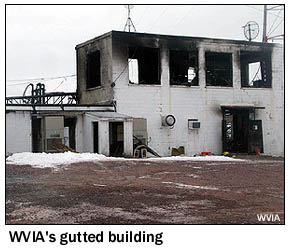 And fires make news,
too: first at Ottawa's CJOH-TV, where a blaze tears through the
CTV station's Nepean studio/office building just as it prepares
to mark veteran anchor Max Keeping's retirement after 37 years,
and then at the Penobscot Mountain transmitter site of Scranton
public broadcaster WVIA-TV/FM, gutting the building and destroying
its transmitting equipment. In Ottawa, CJOH moves downtown to
the "MediaMall" facility of sister station CHRO, apparently
for good; in Scranton, WVIA's neighbor WNEP helps get a digital
TV signal back on the air while engineers launch into a high-speed
rebuilding that will have the station back to normal by fall.
The weather batters WFEA/WZID/WMLL in Manchester, N.H., too,
where a storm rips the roof off their downtown studio building,
flooding the place. And fires make news,
too: first at Ottawa's CJOH-TV, where a blaze tears through the
CTV station's Nepean studio/office building just as it prepares
to mark veteran anchor Max Keeping's retirement after 37 years,
and then at the Penobscot Mountain transmitter site of Scranton
public broadcaster WVIA-TV/FM, gutting the building and destroying
its transmitting equipment. In Ottawa, CJOH moves downtown to
the "MediaMall" facility of sister station CHRO, apparently
for good; in Scranton, WVIA's neighbor WNEP helps get a digital
TV signal back on the air while engineers launch into a high-speed
rebuilding that will have the station back to normal by fall.
The weather batters WFEA/WZID/WMLL in Manchester, N.H., too,
where a storm rips the roof off their downtown studio building,
flooding the place.
New to the air: Seneca Nation commercial outlet WGWE (105.9
Little Valley NY) on Feb. 1.
Gone: WHHO (1320 Hornell NY), Feb. 4.
MARCH: Clear Channel stakes out a corner of the Boston
talk market with the March 8 launch of "Rush Radio"
on the new 50 kW signal of WKOX (1200 Newton); initially with
a double run of Limbaugh in morning drive and his live noon slot,
then later with Jeff Katz in mornings.
 Sports and talk keep
shifting in Syracuse, too, as Galaxy unveils "ESPN Radio
97.7 and 100.1" March 5 on WTLA (1200)/WSGO (1440) and their
new FM translators; two weeks later, Citadel launches FM talk,
replacing "Lite" WLTI (105.9) with the new WXTL. Sports and talk keep
shifting in Syracuse, too, as Galaxy unveils "ESPN Radio
97.7 and 100.1" March 5 on WTLA (1200)/WSGO (1440) and their
new FM translators; two weeks later, Citadel launches FM talk,
replacing "Lite" WLTI (105.9) with the new WXTL.
Fierce coastal storms rip through Connecticut and Rhode Island,
ripping off the studio roof at Bridgeport's WICC/WEBE and knocking
Pawtucket's WDDZ (550) and Warwick's WLKW (1450) off the air
as floodwaters inundate their low-lying transmitter sites. In
northern New Jersey, WGHT (1500 Pompton Lakes) takes on 13 feet
of water, inundating the lower two floors of its building but
leaving the studios and transmitter on the top floor high and
dry - and reachable only by fire boat.
North of the border, veteran CBC "Metro Morning"
host Andy Barrie retires, replaced by Matt Galloway. Barrie's
retirement, at least, is voluntary, as is that of WCVB "Chronicle"
host Mary Richardson; meanwhile, the never-ending job-cut machine
claims veteran Z100 morning sidekick John Bell and overnight
talker Joey Reynolds in New York, talker Jim Vicevich in Connecticut
at WTIC, chief meteorologist Ken Barlow at Boston's WBZ-TV and
Cape Cod's Suzanne Tonaire at WPXC.
 More format changes:
in Vermont, rocker WLFE (102.3) reimages as WIER, "the Wire";
in New York's North Country, WGIX (95.3 Gouverneur) ditches oldies
for country as WLFK, "the Wolf"; Buffalo's WJYE (96.1)
reclaims its old "Joy 96" nickname; on Long Island,
WLVG (96.1) flips to a simulcast of Nassau County AC WKJY (K-JOY
98.3), changing calls to WKJI. More format changes:
in Vermont, rocker WLFE (102.3) reimages as WIER, "the Wire";
in New York's North Country, WGIX (95.3 Gouverneur) ditches oldies
for country as WLFK, "the Wolf"; Buffalo's WJYE (96.1)
reclaims its old "Joy 96" nickname; on Long Island,
WLVG (96.1) flips to a simulcast of Nassau County AC WKJY (K-JOY
98.3), changing calls to WKJI.
Back on the air: WIZR (930 Johnstown NY), with classic country
and - yes! - Red Sox games under new ownership.
Gone: WZUM (1590 Carnegie PA), apparently for good, though
its fate won't be determined until later in the year.
Also gone: the two towers of WRCA (1330 Waltham), removed
from their home in an office-park parking lot after the station
relocated to the WUNR site in Newton, as well as the "Concrete
Donut" studios at City Line and Monument that were long
home to Philadelphia's WFIL-TV/WPVI (Channel 6) and WFIL radio,
razed and replaced by new TV studios next door.
APRIL: The revolving door of talent in northeast Pennsylvania
plucks Kevin Lynn off morning drive at talker WILK, replacing
him with rock jock "John Webster" of rival WEZX, though
a legal fight ensues over whether John Gasper can use that air
name at his new job. (He wins.)
In New York, Joe Scarborough loses his mid-morning WABC radio
airshift in a "temporary retooling" that ends up looking
permanent, Nik Carter departs struggling Emmis rocker WRXP, and
former WLTW morning host Valerie Smaldone returns via streaming
at WOR710.com.
"Corm and the Coach" depart WNMR (107.1) in the
Burlington market, complaining of unpaid salaries, while Hartford's
WTIC gambles (pun fully intended) on ex-rock jock Sebastian as
a replacement for Jim Vicevich, who soon returns to the air as
Sebastian becomes entangled in legal troubles. And in Boston,
the bad blood between Howie Carr and WRKO once again bubbles
up as Carr gets suspended for grousing a little too much about
station management.
A veteran station manager in upstate New York retires: John
Krauss was the first voice ever heard on WRVO (89.9 Oswego) when
it signed on in 1969, and he'd been there ever since.
 More format changes:
WLLF (96.7 Mercer PA) flips to ESPN from smooth jazz; WNAK (730
Nanticoke PA) becomes WZMF, part of the "WGMF" AC network
with 1460 in Tunkhannock and a slew of FM relays; WMHX (106.7
Hershey PA) rebrands from "Mix" to "Channel 106.7";
WKOE (106.7 North Cape May) flips from country to oldies as "Fun
106.7" WFNE; WHXR (106.7 North Windham/Portland ME) drops
its "Bone" simulcast and begins stunting, pending sale
and a July 7 relaunch as Catholic radio, WXTP "The Presence." More format changes:
WLLF (96.7 Mercer PA) flips to ESPN from smooth jazz; WNAK (730
Nanticoke PA) becomes WZMF, part of the "WGMF" AC network
with 1460 in Tunkhannock and a slew of FM relays; WMHX (106.7
Hershey PA) rebrands from "Mix" to "Channel 106.7";
WKOE (106.7 North Cape May) flips from country to oldies as "Fun
106.7" WFNE; WHXR (106.7 North Windham/Portland ME) drops
its "Bone" simulcast and begins stunting, pending sale
and a July 7 relaunch as Catholic radio, WXTP "The Presence."
New to the air: CJOT (99.7 Ottawa) begins testing ahead of
a May 27 launch as "EZ Rock."
MAY: Pittsburgh makes headlines again as ESPN Radio
cuts much of the staff loose at WEAE (1250), a prelude to its
eventual decision at year's end to flip that AM signal to Radio
Disney and send the ESPN affiliation to Clear Channel's WBGG
(970); down the road in Mount Pleasant, Bob Stevens launches
WKVE (103.1) on May 4 with a classic rock format preceded by
lengthy testing. (It's the move-in of the former WANB-FM Waynesburg,
which survives on WANB 1210 and an FM translator.)
More job cuts claim the gigs of longtime WPDH Poughkeepsie
morning man John Tobin, WYJB Albany morning man Ric Mitchell
(who's soon back on the air at Saratoga's WQAR), WBOQ Gloucester
midday veteran Jackie Ankeles and much of the airstaff at Toronto's
"Proud FM," CIRR (103.9). Albany talker Dan Lynch retires
from WGDJ (1300) of his own volition, while a family move sends
Clear Channel Rochester market manager Karen Carey out of town,
to be replaced by market veteran Kevin LeGrett, late with Citadel
in Buffalo and Syracuse.
 On the noncommercial
dial, WBUR launches a daily version of its "Radio Boston"
magazine show to fend off new competition from WGBH, while Hamptons
Community Radio shakes up the East End of Long Island by taking
over WPKM (88.7 Montauk). In northeast Pennsylvania, Family Life
swaps calls between WFUZ (91.3 Tunkhannock) and unbuilt WCIN
(90.9 Laporte); the Laporte CP would then quickly trade in WFUZ
for WCIS, freeing up the WFUZ calls for new use in the market.
And up north, CHNO (103.9 Sudbury) dumps "Big Daddy"
adult hits for "Rewind" oldies. On the noncommercial
dial, WBUR launches a daily version of its "Radio Boston"
magazine show to fend off new competition from WGBH, while Hamptons
Community Radio shakes up the East End of Long Island by taking
over WPKM (88.7 Montauk). In northeast Pennsylvania, Family Life
swaps calls between WFUZ (91.3 Tunkhannock) and unbuilt WCIN
(90.9 Laporte); the Laporte CP would then quickly trade in WFUZ
for WCIS, freeing up the WFUZ calls for new use in the market.
And up north, CHNO (103.9 Sudbury) dumps "Big Daddy"
adult hits for "Rewind" oldies.
Back on the air: WNGS (Channel 67/RF 7) in Springville-Buffalo
and WNYI (Channel 52/RF 20), launching DTV signals just in the
nick of time to beat the one-year deadline after their analog
signals left the air at transition time in 2009.
New to the air: Family Life's WCIJ (88.9 Unadilla NY); public
radio WITH (90.1 Ithaca NY); WTUX (101.1 Gouldsboro ME), simulcasting
WTOS (105.1 Skowhegan); test broadcasts from Toronto's "CARN,"
aimed at determining if a new Caribbean signal can squeeze onto
the dial at 98.7.
JUNE: Modern rock listeners in Philadelphia once again
wonder "Y?" as public station WXPN (88.5) pulls the
plug on its "Y-Rock on XPN," the program service it
launched with former staffers of the much-missed WPLY (100.3,
now urban WPHI).
 Connecticut TV viewers
wonder "why?" as Tribune replaces WTXX (Channel 20)
with WCCT-TV, branding the CW outlet as "The CT," complete
with an odd cartoon mascot evidently escaped from the 1970s PBS
logo. On the coast, a tornado slams the Bridgeport studios of
WICC/WEBE, damaging the roof and knocking the stations off the
air. Connecticut TV viewers
wonder "why?" as Tribune replaces WTXX (Channel 20)
with WCCT-TV, branding the CW outlet as "The CT," complete
with an odd cartoon mascot evidently escaped from the 1970s PBS
logo. On the coast, a tornado slams the Bridgeport studios of
WICC/WEBE, damaging the roof and knocking the stations off the
air.
Rochester's Bob Lonsberry loses his "other" talk
gig, at Clear Channel's KNRS in Salt Lake City, though he'll
start a podcast aimed at Utah listeners later in the year; in
Albany, WGY's Don Weeks announces he'll retire at year's end,
while his former WGY colleague Al Roney moves over to WGDJ (1300)
to replace Dan Lynch.
More format and call changes: WXAL (93.7 Addison/Burlington
VT) to WIFY, WLMI (103.9 Kane PA) to classic rock WUMT, "The
Summit."
New to the air: CIDG Ottawa ("101.9 the Dawg") on
June 7, Catholic WHVM 91.9 Owego NY on June 11.
Gone: Canada's experiment with L-band digital audio broadcasting
(DAB), as the CBC begins asking the CRTC to revoke its licenses.

JULY: It's a good month for country music in Hamilton,
Ontario, where CHAM (820) goes back to the format July 22 after
a brief flirtation with talk, and where nearby CKPC (1380 Brantford)
ditches oldies for "News Country," too. In New York
City, two broadcasters launch country webcasts - "The Elephant"
from local WOR and "GoCountryNY.com" from Los Angeles'
Saul Levine - while WVIP (93.5 New Rochelle) signs on from its
new transmitter site in the Bronx.
 Some big changes
in Vermont: a tower crew removes the WVNY-TV tower atop Mount
Mansfield, the state's highest point; in Randolph, WCVR (102.1)
becomes VPR Classical's newest outlet, WVXR, while the WCVR calls
move to former AM sister WTSJ (1320); Russ Kinsley and Diane
Desmond's eclectic "Album Station" returns to the air
via WZXP (97.9 Au Sable Forks NY); WNMR (107.1 Dannemora NY)
returns with sports as "107.1 the Game." Some big changes
in Vermont: a tower crew removes the WVNY-TV tower atop Mount
Mansfield, the state's highest point; in Randolph, WCVR (102.1)
becomes VPR Classical's newest outlet, WVXR, while the WCVR calls
move to former AM sister WTSJ (1320); Russ Kinsley and Diane
Desmond's eclectic "Album Station" returns to the air
via WZXP (97.9 Au Sable Forks NY); WNMR (107.1 Dannemora NY)
returns with sports as "107.1 the Game."
On the Jersey shore, the Independence Day weekend begins with
a bang from Atlantic Broadcasting, which flips modern rock WJSE
(102.7) to rhythmic top-40 as "Wild 102.7," WWAC. In
upstate New York, there's a second "B95.5" courtesy
of Ken Roser, who relaunches WUTQ (1550 Utica) and its AM sister
stations with a new FM translator in Utica. North of the border,
CFAV (1570 Laval QC) becomes CJLV, while the CRTC orders CHSC
(1220 St. Catharines ON) off the air.
New to the air: CJOS Owen Sound ON (92.3 the Dock), testing
July 12 and officially at 8 AM July 26; CJHK "Hank 100.7"
Bridgewater NS; CKIN 106.3 Montreal (testing).
Gone: CFAO 94.7 Alliston ON, victim of unpaid bills for studio
rent and other services.
AUGUST: Black gospel yields to standards ("Swing
1270") at WHLD Niagara Falls/Buffalo after a leased-time
tenant moves on; AC yields to oldies in Kingston, Ontario as
CFFX (104.3) becomes CKWS-FM at 6 PM August 19; business talk
yields to ESPN Deportes Spanish-language sports at WWDB (860
Philadelphia); the venerable Marblehead tower of WESX (1230 Salem)
yields to development pressure and comes down, the station itself
having moved away earlier.
On the personnel side, D.L. Hughley departs the morning grind
at New York's WRKS (98.7 Kiss FM) to focus on making movies;
Karen Adams announces her retirement from WPRI-TV in Providence
after more than two decades at the anchor desk; and two Portland
morning men are out: Tim Wright after a decade and a half at
WMGX and Bill Fox after a somewhat shorter run at WFNK, "Frank-FM."
Elvis Duran's relentless march across the top-40 radio landscape
finds his New York-based morning show coming to Connecticut's
WKCI, joining other new affiliates in Syracuse (WWHT) and on
the New Hampshire seacoast (WSKX).
New to the air: WUMG (91.7 Stow), the latest link in the WUMB-FM
network, on Aug. 10; CBIT (97.1 Sydney NS), testing a new CBC
Radio One FM service on Cape Breton Island, though the tests
demonstrated a continued need - at least for now - for the bigger
AM signal of CBI (1140), which remains on the air.
 Gone for good: CJUL
1220 Cornwall ON, abruptly silenced by Corus August 18 to concentrate
resources on its two Cornwall FMs; WOYL 1340 Oil City PA, surrendering
its license after equipment failure; WBGD 91.9 Brick NJ, surrendering
its license after the local high school doesn't budget for a
new antenna following roof replacement at the school. Gone for good: CJUL
1220 Cornwall ON, abruptly silenced by Corus August 18 to concentrate
resources on its two Cornwall FMs; WOYL 1340 Oil City PA, surrendering
its license after equipment failure; WBGD 91.9 Brick NJ, surrendering
its license after the local high school doesn't budget for a
new antenna following roof replacement at the school.
SEPTEMBER: Press hits the "reset" button
on the Jersey Shore Sept. 15, restoring top-40 "B98.5"
and the WBBO calls to WKMK (98.5 Ocean Acres) and moving "Thunder
Country" to what had been "Hits 106," WHTG-FM
(106.3 Eatontown, now WKMK) and WBBO (106.5 Bass River Township,
now WTHJ); competitor Millennium flips WADB (1310 Asbury Park)
to oldies, simulcasting with WOBM (1160).
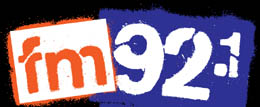 It's a busy month
in Pennsylvania, too, where Shamrock kills off oldies "Cool"
on Sept. 16, flipping WQFM (92.1 Nanticoke) to modern rock "FM
92.1" WFUZ. Former WQFM simulcast WQFN (100.1 Forest City)
takes the WQFM calls and begins simulcasting ESPN Radio outlet
WEJL (630 Scranton). Near State College, WPHB (1260 Phillipsburg)
puts veteran morning man Sheldon Sharpless back on the air, three
months after taking him off. Pittsburgh's WDUQ moves to new digs
on the Duquesne University campus as the wrecking ball looms
over its longtime home. On the Maryland line, WCHA (800 Chambersburg)
begins simulcasting True Oldies Channel oldies with WHAG (1410
Halfway MD); to the west, college station WCYJ in Waynesburg
moves from 88.7 to 99.5; north of Pittsburgh, talk "Liberty
910" replaces gospel at WAVL in Apollo; and way up north
near Erie, WWCB (1370 Corry) goes oldies as WHYP. It's a busy month
in Pennsylvania, too, where Shamrock kills off oldies "Cool"
on Sept. 16, flipping WQFM (92.1 Nanticoke) to modern rock "FM
92.1" WFUZ. Former WQFM simulcast WQFN (100.1 Forest City)
takes the WQFM calls and begins simulcasting ESPN Radio outlet
WEJL (630 Scranton). Near State College, WPHB (1260 Phillipsburg)
puts veteran morning man Sheldon Sharpless back on the air, three
months after taking him off. Pittsburgh's WDUQ moves to new digs
on the Duquesne University campus as the wrecking ball looms
over its longtime home. On the Maryland line, WCHA (800 Chambersburg)
begins simulcasting True Oldies Channel oldies with WHAG (1410
Halfway MD); to the west, college station WCYJ in Waynesburg
moves from 88.7 to 99.5; north of Pittsburgh, talk "Liberty
910" replaces gospel at WAVL in Apollo; and way up north
near Erie, WWCB (1370 Corry) goes oldies as WHYP.
In the Boston market, it's the end of the business talk format
at WBIX (1060 Natick), which goes silent Sept. 15 to prepare
for its move to a new daytime transmitter site and new Catholic
ownership.
Up in Burlington, Vox drops "DOT-FM" oldies on WXZO
(96.7 Willsboro NY) in favor of top-40 "Planet 96.7."
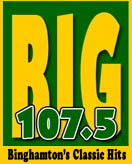 Albany gets an FM
talker on September 20, when Clear Channel unplugs modern rock
"Channel 103.1" WHRL, letting its one-person staff
go as it flips the frequency to WGY-FM. In Binghamton, Clear
Channel's classic rock "Fox" WBBI (107.5 Endwell) segues
to classic hits as "Big 107.5," and in Glens Falls,
WENU (1410) slides from oldies to classic country. Albany gets an FM
talker on September 20, when Clear Channel unplugs modern rock
"Channel 103.1" WHRL, letting its one-person staff
go as it flips the frequency to WGY-FM. In Binghamton, Clear
Channel's classic rock "Fox" WBBI (107.5 Endwell) segues
to classic hits as "Big 107.5," and in Glens Falls,
WENU (1410) slides from oldies to classic country.
Back on the air: the former WGAJ (91.7 Deerfield), with a
new antenna, a new tower, new calls (WNNZ-FM) and new ownership,
the WFCR Foundation, which flips the station to NPR news and
talk as it just barely beats the one-year deadline to return
the signal to the airwaves Sept. 9.
New to the air: WSLZ 88.1 Cape Vincent, the newest link in
the North Country Public Radio network; WFMR 91.3 Orleans MA,
a central Cape relay of Provincetown's WOMR 92.1 (4:36 PM, September
16.)
Gone for good: Dartmouth's WDCR (1340 Hanover), deleted after
several years of only intermittent operation; CHSC (1220 St.
Catharines), finally gone Sept. 30 after a month of unsuccessful
appeals of its license revocation.
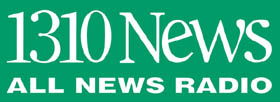 OCTOBER:
Rogers brings a new AM all-newser to life in Ottawa October
18, trading in oldies on CIWW (1310) for "1310News." OCTOBER:
Rogers brings a new AM all-newser to life in Ottawa October
18, trading in oldies on CIWW (1310) for "1310News."
Along Long Island Sound, Citadel rearranges its station lineup,
moving calls and format from talker WXLM (104.7 Montauk NY) to
the formerly-Spanish WSUB (980 Groton CT) and later relaunching
104.7 as hot AC WELJ, a partial simulcast of New York City's
WPLJ 95.5. Long Island's WMJC (94.3 Smithtown) changes calls
to WIGX, a preview of its Nov. 5 format flip to 90s-pop "Gen
X Radio." In the big city, talker Joe Crummey (known as
"E.J. Crummey" on WNBC and WAPP in the '80s) comes
home from Phoenix to take over mid-mornings on WABC (770).
In Bangor, Stephen King flips WZON (620) from sports to talk,
simulcasting WZON-FM 103.1. In Scranton, Citadel dumps the local
airstaff at country WSJR (93.7), flipping the station to a satellite
feed, while in Pittsburgh, morning man Jim Merkel and co-host
Theresa Colaizzi are out at "3WS" (WWSW 94.5).
In the Hudson Valley, a call change turns WGNY-FM (103.1 Newburgh)
into WJGK, freeing up the WGNY-FM calls for a new home at a new
sister station on 98.9 in Rosendale; in the Mohawk Valley, Leatherstocking
Media takes over operation of WUTI (1150 Utica), installing its
"CNY Talk Radio" simulcast on the station.
 Towers are in the
news this month: in Montreal, where the former CBC AM towers
in Brossard are demolished; in Peterborough, where the former
CKRU 980 site is razed; and in Utica, where a tower crew's goof
topples an antenna being removed from the tower behind the WKTV
studios, disrupting the TV station's programming as the building
is evacuated. Towers are in the
news this month: in Montreal, where the former CBC AM towers
in Brossard are demolished; in Peterborough, where the former
CKRU 980 site is razed; and in Utica, where a tower crew's goof
topples an antenna being removed from the tower behind the WKTV
studios, disrupting the TV station's programming as the building
is evacuated.
New to the air: CKHY "Live 105" Halifax (1:05 PM,
August 1); CFGT-FM (104.5 Alma QC, on October 13)
Gone for good: CFGT (1270 Alma QC), October 16.
NOVEMBER: Michael Smerconish shakes up the Philadelphia
talk landscape with his planned move from mornings to afternoons
at WPHT (1210), creating a morning-drive opening to be filled
by Kansas City's Chris Stigall and shuffling the "Big Talker"'s
lineup to pull Glenn Beck and Sean Hannity off the Philly airwaves.
In another Philly shuffle, veteran WXTU (92.5) middayer Leigh
Richards is out, and in yet another Philly shift, WISX (106.1)
segues from "My 106.1" to "Mix."
Also out are staffers at Cox's Stamford/Norwalk cluster, where
WCTZ (96.7 the Coast) is headed to EMF's "K-Love" network
and WFOX (95.9) to consolidation with Cox's WPLR/WEZN facility
up the coast. Down the coast in New York City, Clear Channel
cuts much of the airstaff at "Power 105" WWPR, including
morning man Ed Lover.
In Boston, Ed Walsh retires from mornings at WBZ after just
a few years on the shift, while WBUR GM Paul La Camera eases
into his second retirement, though he'll remain with the station
in an advisory capacity for a while, assisting incoming GM Charlie
Kravets, late of NECN.
 Also gone from the
Boston airwaves are WTKK evening host Michele McPhee and the
talk format on WNSH (1570 Beverly), which begins simulcasting
Spanish from WNNW (800 Lawrence) en route to a sale to WNNW owner
Costa-Eagle in 2011. Up the coast, WMYF (1380 Portsmouth NH)
flips from standards to ESPN sports. Also gone from the
Boston airwaves are WTKK evening host Michele McPhee and the
talk format on WNSH (1570 Beverly), which begins simulcasting
Spanish from WNNW (800 Lawrence) en route to a sale to WNNW owner
Costa-Eagle in 2011. Up the coast, WMYF (1380 Portsmouth NH)
flips from standards to ESPN sports.
Cadillac Jack moves from Boston back to New York City to take
on more management duties at Clear Channel's WWPR (Power 105)
there; upstate, Citadel brings "Slick Tom" Tiberi back
to nights at "97 Rock" WGRF, two years after cutting
his job. In Utica, the demise of the "God's Country"
network sends WOKR (93.5 Remsen) back to Air1, and in Binghamton,
WRRQ (106.7) moves to a much better transmitter site on Ingraham
Hill.
In Pennsylvania, KDKA turns 90, then moves out of its longtime
home at Gateway Center to join its CBS Radio sisters in suburban
Green Tree. Elsewhere in the state, WSNU (92.1 Lock Haven) changes
calls to WSQV, while WWBE (98.3 Mifflinburg) and its sister stations
reimage as "B98.3" and Family Life Network begins LMA'ing
WHPA (93.5) in the Altoona market.
Back on the air: WQOM (1060 Natick), signing on with Catholic
programming November 1; WA2XMN (42.8 mc), the Major Armstrong
memorial station at Alpine, N.J., returning to the air for the
day Nov. 6 as part of a year-long celebration of the 75th anniversary
of the inventor's first public demonstration of FM radio.
Gone: WRMO (93.7 Millbridge ME), at least for now.
New: WOPG 89.9 Esperance NY, with Catholic programming; CKBG
107.3 Middle Musquodoboit NS; CBEW 97.5 Windsor ON, eventually
to replace CBE 1550; WWLN 90.5 Lincoln ME, simulcasting WMDR-FM
88.9 Oakland with a different "God's Country" from
the network that went defunct on EMF's stations.
DECEMBER: Another year draws to a close with too many
layoffs, including news staffing cuts at Buffalo's struggling
WKBW-TV, morning shows out at WBWZ (Star 93.3) in the Hudson
Valley and WBLI on Long Island, and a contract dispute that leads
"Goumba Johnny" Sialiano to depart New York's WKTU
rather than renew at much lower pay. In Boston, veteran sports
talker Eddie Andelman announces he's hanging up his headphones
after 40 years on the air, most recently at WTKK (96.9); in Pittsburgh,
WPXI (Channel 11) sports director John Fedko retires from the
daily grind, though not his Friday high school sports show -
and in Albany, veteran WGY morning man Don Weeks, who'd already
announced he was retiring at year's end, moves up his finale
as health issues make it impossible for him to continue any longer
on the air.
Lori Sergiacomi, known on-air as Tanya Cruise, is off the
air and eventually out of a job at WWLI (105.1 Providence) after
being indicted in connection with an alleged insurance-fraud
conspiracy.
Peconic Public Broadcasting celebrates the end of a challenging
year by pulling together the funding that it needs to buy WLIU
(88.3 Southampton) from Long Island University; upstate in Utica,
EMF flips formats and calls, sending "K-Love" and WKVU
from 100.7 to the huge 107.3 signal formerly home to "Air1"
WRCK.
 And the year ends
with a few more format changes, most notably in Syracuse, where
Clear Channel shifts urban "Power" from WPHR (106.9)
to the AM dial, killing off sports on WHEN to launch "Power
620" and clearing the FM frequency to become a simulcast
of news-talk WSYR (570). In Vermont, ESPN heads to FM on New
Year's Day to replace classic rock "Champ" on WCPV
(101.3 Essex), which will mean Fox Sports replacing ESPN at WCAT
(1390 Burlington). And the year ends
with a few more format changes, most notably in Syracuse, where
Clear Channel shifts urban "Power" from WPHR (106.9)
to the AM dial, killing off sports on WHEN to launch "Power
620" and clearing the FM frequency to become a simulcast
of news-talk WSYR (570). In Vermont, ESPN heads to FM on New
Year's Day to replace classic rock "Champ" on WCPV
(101.3 Essex), which will mean Fox Sports replacing ESPN at WCAT
(1390 Burlington).
Other post-Christmas format moves include a return to older
soft AC at WPLM-FM ("Easy 99.1") south of Boston.
New to the air: WKNZ 88.7 Harrington, Delaware, serving extreme
southern New Jersey; WZBL 88.1 Barnegat Light NJ, on Dec. 15,
simulcasting WVBV 90.5 Medford Lakes.
Gone: the top of the WXXI-TV tower on Rochester's Pinnacle
Hill, removed now that the old analog TV antennas mounted there
are no longer needed.

Year-End Rant: It
Gets Better
Last year in this space, we yielded the floor to our friend
Dennis Jackson, who opined, "For the most part, corporate
radio is a hollow, bloodless shell replacing a medium that listeners
once cared deeply about," offering the hope that "perhaps
2010 will be the year when real broadcasters are let back into
their stations and we can begin to turn our medium around before
it’s too late."
It's probably fair to say that 2010 didn't fully live up to
Dennis' high hopes, but it may well be that one day we'll be
able to look back at this otherwise largely forgettable year
and see at least the beginnings of a turnaround.
Consider, after all, what didn't come to pass in 2010:
Nobody overpaid for any radio acquisitions.
The stations that changed hands during the year did so at prices
far below the inflated premiums that even some pretty questionable
facilities were fetching just a few years earlier - and they
sold, for the most part, to established broadcasters with credible
business plans and solid financing. Even if that was a direct
result of the credit crunch that froze up almost any source of
financing, it was still a positive development in a way: broadcasters
who couldn't get into debt in 2010 are less likely to get killed
by that debt down the road. (And one needed to look no further
than the ongoing budget problems at Citadel, among other big
groups, to see the hangover still lingering from the easy-credit
buying spree earlier in the decade.)
What's more, at least some of those 2010 sales took stations
that had been caught up in the credit-fueled frenzy and put them
back in the hands of experienced broadcasters. In Scranton, for
instance, the former Route 81/WS2K stations landed with local
groups Bold Gold and GEOS, and that has to be good news in the
long run for those more interested in making good radio than
in making maximum return for venture capitalists.
There were fewer mass layoffs. Even at troubled
groups like Citadel, Granite and Regent (which went into bankruptcy
and emerged under the new name Townsquare), the panicked mass
job cuts that were such a regular and painful part of the business
in 2008 and 2009 were largely absent in 2010. Even allowing for
the unfortunate reality that there simply weren't as many remaining
jobs to cut, it strongly suggested that the industry had finally
pared back about as far as it could - and there were even occasional
signs, such as Citadel's rehiring of popular Buffalo jock "Slick
Tom," to suggest that there could be some job growth in
the offing in the years to come.
Some struggling stations didn't remain on life support.
It's never fun to see a radio station go dark, of course,
but it's also hard to argue that the explosion of new radio signals
over the last few decades has been an unquestionably good thing
for the business. So the demise of at least a few signals that
had barely been competitive - from WZUM in Pittsburgh to WHHO
in Hornell to CJUL in Cornwall - may end up making the rest of
the herd that much stronger. Much the same can be said about
the conversion of other marginal players - WBIX outside Boston,
WHXR near Portland, and soon-to-be-New York City rimshot WCTZ
- to noncommercial religious operation.
Streaming audio didn't get any cheaper. The
experts have been telling us for years that the "infinite
dial" offered by streaming audio, when coupled with ubiquitous
wireless net access, will make the limited choices offered by
conventional radio obsolete. In the long run, they may yet be
right - but in 2010, there were still plenty of obstacles in
the way.
For end users, heavy consumption of streaming radio or newer
services like Pandora may get more expensive: Verizon Wireless'
move to join AT&T in charging for wireless data usage above
a (fairly small) usage cap promises to make "Internet Overcharging"
(as my neighbor Phillip Dampier calls it over at StopTheCap.com)
the new standard in the wireless arena, and Internet radios were
still a relatively niche product for home use, at least when
compared to the enormous installed base of conventional AM/FM
receivers.
And at the content-provider end of things, the music industry
continued to make it comparatively expensive for radio stations
to stream their product, especially as long as traditional broadcast
radio continued to enjoy an exemption from performance royalties,
as it did throughout the year in the absence of congressional
action.
So as 2010 drew to a close, radio was still what it's been
for many years: by far the least expensive way to efficiently
deliver audio content to a mass audience. And sometimes, that
content was even worth consuming...
Radio, in short, didn't die. For all the predictions
of its imminent doom, broadcast radio ended 2010 in a better
position than a lot of other corners of the "old media"
landscape.
Unlike local TV, embroiled in never-ending battles with the
cable and satellite systems that delivered its product to most
consumers and under pressure to surrender more of its broadcast
spectrum, radio continued to control its own distribution destiny.
Unlike local newspapers, radio's piece of the ad-revenue pie
remained fairly stable and relatively insulated from new-media
competition. A Pandora or a Rhapsody might have the potential
to siphon some listening hours away from local radio, but not
to usurp radio sales in the same way that Craigslist and Patch
and Groupon have vacuumed up local advertising that was once
the sole province of newspapers.
And unlike the music industry, radio has shown it can change
when it must. I've written extensively in past Rants about radio's
ability to reinvent itself in the past when new technology threatened
to usurp its previous strengths. In 2010, radio continued to
demonstrate that in the right hands, under the right circumstances,
it could still connect with listeners with a passion, speed and
efficiency that few other media, new or old, can match.
This Rant is being written on the night of the massive blizzard
that's shutting down much of the east coast, an event for which
the 1010 WINSes and KYWs and WBZs of the world remain incomparable
in their ability to reach a massive audience with urgent information
instantaneously. If there's still a role for that kind of mass
medium - the role, if you will, of creating one big community
out of the increasingly splintered world fostered by today's
social media - radio is ideally poised to be there.
To do that and to do it well, one more thing has to happen
in 2011 and beyond that didn't happen in 2010: radio (and local
TV, too) must become far more willing to innovate and experiment.
That's unlikely to happen in the bigger markets, where corporate
owners remain constrained by debt service and the pressure of
playing to the perceived demands of PPM-based ratings.
But in those smaller markets, there's once again some hope
for innovation. As the consolidators and the investment bankers
move on in search of more lucrative fields, at least part of
Dennis Jackson's wish from a year ago is coming true. The broadcasters
are being let back into their stations, and the future
of their medium will depend in large part on what they do with
them now.
Radio's last great rebirths - especially the top-40 revolution
of the 1950s - came at times, like this one, when the medium
was all but given up for dead, and they came not from the big
station groups or major markets of the era, but rather from new
players at second-tier signals in smaller markets, where the
stakes were low and the room for experimentation was vast.
For at least some owners and some stations, the stakes are
once again low - but the incentive to continue with business
as usual remains high. It's easy to plug music and liners in
to automation, or to hook up the satellite receiver to pull in
national talk hosts and sports networks, and it might even be
lucrative for a little while longer. But those generic forms
of radio are the past, not the future, and broadcasting must
make a concerted effort to open the doors much wider, experimenting
much more aggressively with new ideas and new voices, if it's
going to do more than merely maintain the status quo.
"When you got nothing," as Mr. Dylan famously sang,
"you got nothing to lose" - and it's in that spirit
that we head for 2011, eager as always to see what might be coming
next, and to keep sharing it with all of you in our seventeenth
year of NERW.

And as we do every year, we close out our Year in Review by
remembering the many great radio and TV people our region lost
in 2010.
In Memoriam
- MAURICE "MOE" POLAYES, 86, WADK/WJZS owner (Dec.
9, 2009)
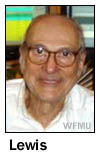 HENRY LEWIS, 77,
veteran WNYC announcer (Dec. 25, 2009) HENRY LEWIS, 77,
veteran WNYC announcer (Dec. 25, 2009)
- ED BEACH, 86, WRVR "Just Jazz" host (Dec. 25, 2009)
- PHIL MUSICK, 71, Pittsburgh sports columnist, WTAE host (Jan.
5)
- YVONNE ZANOS, 60, KDKA-TV consumer reporter (Jan. 8)
- DENNY GEISEN, 66, WBZ-TV newswriter/editor (Jan. 11)
- ART RUST Jr., 82, New York sportscaster (Jan. 12)
- GEORGE JELLINEK, 90, former WQXR music director (Jan. 17)
- JOHN CATER, 32, former KDKA-TV anchor (Jan. 19)
- ALFRED E. ANSCOMBE, 89, WKBW station manager, WBJA-TV owner
(Jan. 19)
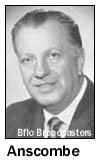 HAROLD GLUNT, 75,
steel magnate-turned-PA/OH station owner (Jan. 21) HAROLD GLUNT, 75,
steel magnate-turned-PA/OH station owner (Jan. 21)
- KEN MATZ, 63, WCAU-TV anchor (Jan. 23)
- TOM BROOKSHIER, 78, Eagles star turned Philly sports talker
(Jan. 29)
- CECIL HEFTEL, 85, veteran station owner (Feb. 5)
- LARRY AIKEN, 69, former KQV music director (Feb. 13)
- JAMES MARIK ("J.R. NELSON"), 60, Z100 production
director (Feb. 16)
- MARLOWE FROKE, 82, WPSX-TV founder (Feb. 23)
- DAVE NOLAN, 48, WNYC producer (Feb. 26)
- OTTO "MARK" SCHAEFER, 84, KQV Pittsburgh newsman
(Feb. 26)
- DON KENT, 92, WBZ-TV weather pioneer (Mar. 2)
- VINNIE BANDA, Waterbury, Connecticut DJ (Mar. 3)
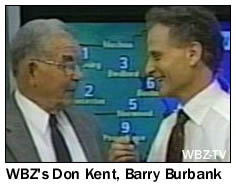 KEN SYNESAEL, 56,
WACK Newark NY morning man (Mar. 6) KEN SYNESAEL, 56,
WACK Newark NY morning man (Mar. 6)
- ROD DEWAR, 83, former CJAD Montreal host (Mar. 9)
- DON RUSSELL, 89, Dumont TV announcer and WSTC PD (Mar. 13)
- EDMUND DINIS, 85, WJFD New Bedford owner (Mar. 14)
- RON LUNDY, 75, WABC Musicradio legend (Mar. 15)
- JOE DEMBO, 83, CBS executive (Mar. 15)
- HERB DENENBERG, 80, WCAU-TV consumer reporter (Mar. 18)
 ALBERT KOVALUSKY
("AL KOVY"), 53, Pottsville PA jock (Mar. 24) ALBERT KOVALUSKY
("AL KOVY"), 53, Pottsville PA jock (Mar. 24)
- DAN DiNICOLA, 68, WRGB reporter (Mar. 24)
- BETTY CUSHING GRIFFIN ALLINGER, 93, WIBX Utica personality
(Mar. 27)
- PHIL LESTER, 58, KQV Pittsburgh newscaster (Mar. 30)
- PETER GOLDSMITH, 60, WNED-FM founding PD (Mar. 30)
- MALCOLM POINDEXTER, 84, KYW-TV reporter (Mar. 30)
- BRETT RUSHON ("BRETT RICHARDS"), 52, New England
DJ (April 17)
- RALPH SNODSMITH, 70, "Garden Hotline" host (April
17)
- HARRY WAPPLER, 73, former WNBC-TV weatherman (April 21)
- PAT FAGAN, 83, Buffalo announcer, WWRJ Long Island GM (April
24)
- DAVID BERNSTEIN, 72, Sunair Communications owner (May 1)
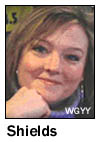 KARIE "CRICKETT"
SHIELDS, 41, WGYY/WGYI middayer (May 3) KARIE "CRICKETT"
SHIELDS, 41, WGYY/WGYI middayer (May 3)
- TERRY KIELTY, 86, CFRA Ottawa GM (May 4)
- ERNIE HARWELL, 92, Brooklyn Dodgers voice turned Tigers radio/TV
legend (May 4)
- CLAUDE "RED" PARTON, 90, Syracuse sportscaster
(May 5)
- BOB EOLIN, 67, Corning/Elmira station owner (May 17)
- BOB SHIPLEY, 82, WSBA York operations manager (May 18)
- BILL "WEE WILLIE" WEBBER, 80, Philadelphia radio/TV
host (May 23)
- SLIM BRYANT, 101, KDKA announcer turned country star (May
28)
- GLENN "G" WILLIAMS, 42, CIKR Kingston PD (May 31)
- HIMAN BROWN, 99, veteran radio drama producer (June 4)
- LARRY SCHRECONGOST, 58, western PA station owner (June 8)
- TONY CENNAMO, 76, Boston jazz host (June 8)
- DONALD FORDHAM, 82, Finger Lakes polka host (June 9)
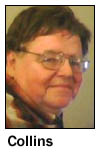 RON HEMBREE, 72,
Cornerstone TeleVision president (June 10) RON HEMBREE, 72,
Cornerstone TeleVision president (June 10)
- ANDREW LANGSTON, 83, WDKX Rochester founder (June 10)
- STEW SCHANTZ, 53, Hudson Valley/Utica/Berkshires PD (June
11)
- DON DeROSA, 69, Albany DJ turned Oswego station owner (June
19)
- MICHAEL COLLINS, 63, Connecticut newsman and educator (June
24)
- ROBERTO "BOB ORTIZ" CANO, NYC newsman (June 28)
- CHRIS "THE MAGIC CHRISTIAN" CHARLES, 66, WVBF,
WMEX, WIBG jock (July 2)
- KEITH SILVER, 80, WWLP-TV anchor/news director (July 2)
- MURRAY CHERCOVER, 80, CTV president (July 3)
- HIPOLITO CUEVAS, 44, Connecticut Spanish-language broadcaster
(July 7)
- PETER "SHAIN" SHAMIN, 53, WNBC jock, producer (July
7)
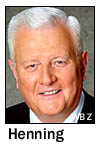 JOHN HENNING, 73,
Boston TV news anchor (July 7) JOHN HENNING, 73,
Boston TV news anchor (July 7)
- BOB FISH, 65, WHJJ/WHJY owner, WRKO GM, WSBE president (July
9)
- JACK CRAIG, 81, Globe TV sports columnist (July 9)
- FRANK TEAS, 81, WSMN Nashua PD (July 10)
- GEORGE LIBUTTI, 86, former WROC Rochester station manager
(July 11)
- JOHN BEASTON, 32, WNNK Harrisburg news director (July 12)
- TOM NOONAN, 63, Rochester DJ (July 14)
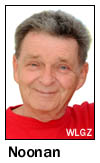 JOHN "BIG ANGE"
MANZI, 67, veteran Rhode Island DJ (July 17) JOHN "BIG ANGE"
MANZI, 67, veteran Rhode Island DJ (July 17)
- KEN GHOLSON, 49, Long Island DJ (July)
- BOB SPRAGUE, 70, KQV newsman (July 17)
- BOB ADAMS, 92, WNCN New York newsman (July 19)
- JACK SLATER, 76, former WTVH Syracuse weatherman (July 25)
- J.J. MAURA, 61, WCAU-TV announcer (July 28)
- STEPHAN "STEVE CHRISTY" GRABIJAS, 75, WENY weatherman/announcer
(July 29)
- KERRY RICHARDS, 58, former WOR engineer (August)
- MARK CARROS, 55, WMGM-TV news operations manager (Aug. 7)
- SYD SMALL, 72, Access.1 Communications president (Aug. 8)
- NELLIE KING, 82, Pirates pitcher-turned-broadcaster (Aug.
11)
- ALAN "DANGEROUS DAN LUNDY" YOFFEE, 59, former WECQ
DJ (Aug. 13)
- JACK BUCKWALTER, 79, Steinman Enterprises chairman (Aug.
18)
- MANNY BIDERMAN, 90, longtime WCRB executive (Aug. 21)
- RON "JAMES POND" SMITH, 49, WGYY/WGYI PD/morning
man (Sept. 2)
- CRAIG SMITH, 54, Southern Ontario/WNY Radio-TV Forum moderator
(Sept. 6)
- JOHN KLUGE, 95, Metromedia founder (Sept. 7)
- JIM WALSH, 62, former WSNY-WVKZ Schenectady owner (Sept.
13)
- JOHN BECKER, 90, WGCH owner (Sept. 17)
- PAUL BRISSETTE, 78, WWLP executive-turned-owner (Sept. 23)
- RAY "DOWELL" McDOWELL, western Massachusetts PD
(Sept. 25)
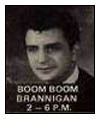 SOPHIE ZEMBRUSKI,
90, longtime Connecticut Polish radio host (Sept. 26) SOPHIE ZEMBRUSKI,
90, longtime Connecticut Polish radio host (Sept. 26)
- KEN GRIFFIN, 73, Hartford DJ (Sept. 28)
- MALCOLM "MAL" FARIS, 67, CKFH/CKGM DJ (Oct. 5)
- MARY MARGARET MYERS, Philadelphia/NYC/network radio anchor
(Oct. 13)
- JERRY MARSHALL, 91, veteran NYC DJ (Oct. 14)
- BOB McNAMARA, 76, Albany sportscaster (Oct. 17)
- JOSEPH "BOOM BOOM BRANNIGAN" MOTTO, 82, Albany
top-40 legend (Oct. 19)
- MARTIN BECK, 93, Beck-Ross Communications co-owner, Katz
exec (Oct. 21)
- PHILIP ROBERTS, 73, former NJ Association of Broadcasters
president (October)
- BRUCE MATTHEWS, 76, WWSC Glens Falls morning man (Oct. 22)
- CHARLIE O'DONNELL, 78, Philly/NYC/LA jock, "Wheel of
Fortune" voice (Nov. 1)
- TOM BUSCH, 63, formerly with WLDB, WRYT, then KNOM Nome (Nov.
1)
- GUY PATRICK GARRAGHAN, WCKL/WRIP morning man (Nov. 2)
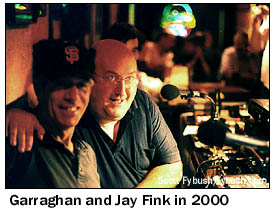 MIKE RYAN, 45, CKEY/CFLZ
PD, jock (Nov. 8) MIKE RYAN, 45, CKEY/CFLZ
PD, jock (Nov. 8)
- LARRY BLOOMFIELD, 72, traveling engineering educator (Nov.
8)
- TOM DOOLEY, 63, WFIL 1970s jock (Nov. 9)
- ADAM BITTINGER, 66, WJAC-TV weatherman, WJNL talk host (Nov.
9)
- GARY GEERS, 84, KYW-TV announcer (Nov. 10)
- RICHARD "DICK RICHARDS" DiROMA, 77, Altoona sportscaster
(Nov. 16)
- GEORGE ALLEN, 71, Rhode Island TV, radio personality (Nov.
15)
- KEVIN McNICHOLAS, 61, Mass. statehouse reporter (Nov. 25)
- JIM KELLEY, 61, Buffalo sportswriter, talk host (Nov. 30)
- BRUCE KEIDAN, 67, Pittsburgh sportswriter, talk host (Nov.
30)
- DON MEREDITH, 72, MNF announcer, ex-WBUX owner (Dec.
5)
- MARK DAILEY, 57, CITY-TV announcer, anchor (Dec. 6)
- PAT McCARTHY, 52, Lowell talk host (Dec. 7)
- PAUL HURD, 89, WHDH engineer (Dec. 12)
- JOEL BLUMBERG, 64, NYC sports producer (Dec. 18)
- AL "CLAY COLE" RUCKER, 72, NYC teen-TV host (Dec.
18)
- FRED FOY, 89, "Lone Ranger" announcer, later lived
in Malden, MA (Dec. 22)
- NEIL ROGERS, 68, Florida talk host born Nelson Behelfer in
Rochester (Dec. 24)

NorthEast Radio Watch is made possible by the generous
contributions of our regular readers. If you enjoy NERW, please
click here to
learn how you can help make continued publication possible. NERW
is copyright
2010 by Scott Fybush. |

